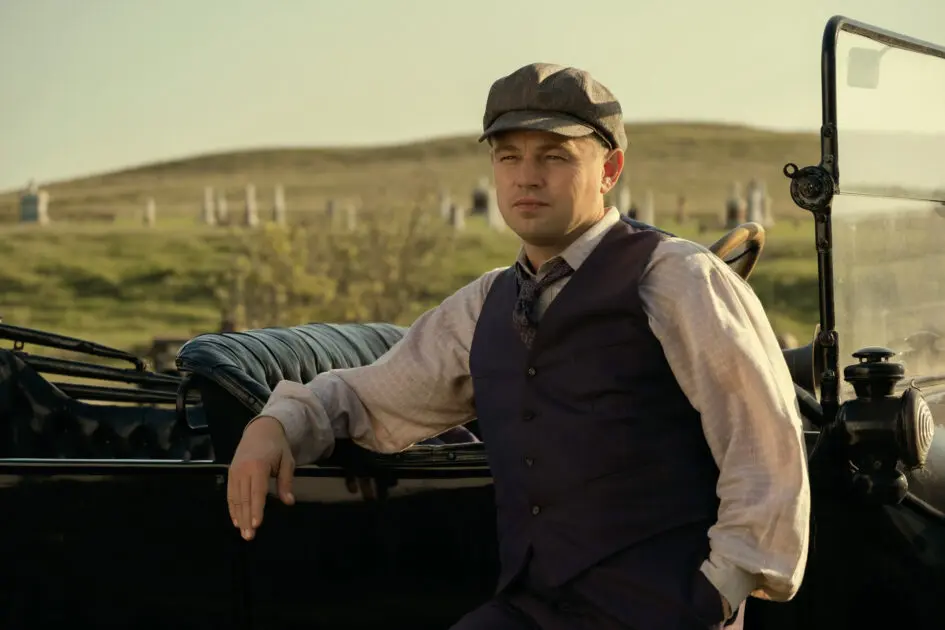I must confess my fondness for well-crafted Westerns. Despite my virtual film library being primarily dominated by sci-fi and horror, classic and contemporary Westerns have captured my admiration. Whether it’s timeless gems like Gunfight at the O.K. Corral or Guns of the Magnificent Seven, or more recent masterpieces like 3:10 to Yuma and Unforgiven, there’s something about the rugged outdoors and the portrayal of a simplistic life in these films that resonates with me.
The allure of Western films captivates me for a multitude of reasons. There’s an inherent nostalgia and charm in how these movies transport viewers to a bygone era, where vast landscapes and the untamed frontier serve as the backdrop for stories of courage and honor. The simplicity of life on the open range, juxtaposed with the complexity of human nature and morality, creates a unique dynamic that I find endlessly fascinating. With its rugged individualism and unwavering sense of justice, the cowboy ethos resonates with a part of me that yearns for authenticity and resilience, evoking a sense of adventure and timeless storytelling that keeps me coming back for more.
Beyond their tales of frontier heroism, these films occasionally peel back the layers of American history to reveal its darker chapters. In particular, they shed light on the tumultuous relationship between the burgeoning oil industry and Native American communities.
These films often confront the uncomfortable truths of exploitation, displacement and cultural erasure. The pursuit of oil wealth becomes a thematic backdrop, exposing the greed and ruthlessness that characterized certain aspects of American expansion. By delving into the struggles of Native American populations facing dispossession and the ruthless pursuit of resources, these Westerns serve as a cinematic mirror reflecting the harsh realities of historical injustices, prompting viewers to confront the complex moral dimensions woven into the fabric of the American frontier.
In Martin Scorsese’s most recent cinematic creation, he explores the American West shaped by oil rigs and the malevolent conspiracies orchestrated by influential figures.
Killers of the Flower Moon, set in the early 1900s, unfolds as the Osage tribe discovers valuable oil reserves beneath their lands. Opting to sell oil rights to companies, the tribe, unfortunately, sees the funds entrusted to legal guardians instead of directly benefiting them. Against the backdrop of the conclusion to WWI, Ernest Burkhart (Leonardo DiCaprio) returns home and influenced by his corrupt uncle William King Hale (Robert De Niro), strategically woos an Osage woman named Mollie Kyle (Lily Gladstone).
The duo’s sinister plan involves marrying into the tribe and orchestrating several accidental deaths among her remaining family members, ensuring Ernest becomes the sole heir to the Osage fortune. With their malevolent scheme in motion, Ernest and William embark on a dark and treacherous path.
As previously mentioned in other reviews, the perception of a movie’s duration can be deceiving, often feeling lengthy even with a short actual runtime, and vice versa. Killers of the Flower Moon, boasting an imposing three-and-a-half-hour duration, might seem like a formidable task on paper, a challenge for anyone to endure. With a hectic schedule, finding time for this movie proved challenging. Contrary to expectations, the time swiftly elapses. Martin Scorsese has skillfully crafted a film with a seamless flow, making it surprisingly easy to watch. The minutes flew by as I found myself deeply immersed in the narrative and captivated by the evocative world Scorsese skillfully brought to life.
DiCaprio undertakes a dual role, introducing his character with an initial impression of simplicity, seemingly taken aback by his uncle’s schemes. However, this facade is soon shattered, revealing him to be as sinister and manipulative as Uncle William, reminiscent of his portrayal of Calvin Candy in Django Unchained.
DiCaprio shapes Burkhart much like Candy, infusing both characters with an undeniable charm that can easily enchant others. One might get drawn in, considering him a friend, colleague or even a lover, only to realize it was all a carefully constructed ruse. Mirroring Calvin Candy, Ernest Burkhart is poised to become one of the most memorable villains in cinematic history, a testament to Leonardo DiCaprio’s acting prowess.
In a compelling bid for Best Supporting Actor, Robert De Niro holds his own alongside Leonardo. His portrayal of William Hale brings to mind the character Patrick Bateman from American Psycho, exuding a pervasive narcissism that is palatable. Hale carries an air of absolute self-assurance, believing he can act with impunity, shielded from any consequences. Throughout the majority of the film, he effortlessly maneuvers events to his liking, seemingly untouchable.
In a notable scene, he even gains the upper hand over Burkhart, wielding a paddle to humiliate him, well aware of Ernest’s helplessness to retaliate. De Niro skillfully embodies the character, drawing on his extensive acting experience and leaving a lasting impression that positions him as a strong contender in the upcoming awards season.
Killers of the Flower Moon weaves a tapestry that combines elements of a love story, a gangster flick and a Western seamlessly. Despite the potential for a muddled narrative, the film’s combination of genres proves to be a cohesive masterpiece. Earning a perfect five out of five stars, the collaboration between Martin Scorsese, Leonardo DiCaprio and Robert De Niro once again hits the mark. The director’s affinity for working with these A-list actors shines through, establishing a winning formula.
Both DiCaprio and De Niro deliver compelling performances, making cases for their names at the upcoming Oscars. While Killers of the Flower Moon may not adhere to the conventional Western mold that typically captures my attention, it serves as an illuminating exploration of some of the darker facets of America’s history, demanding thoughtful examination.

